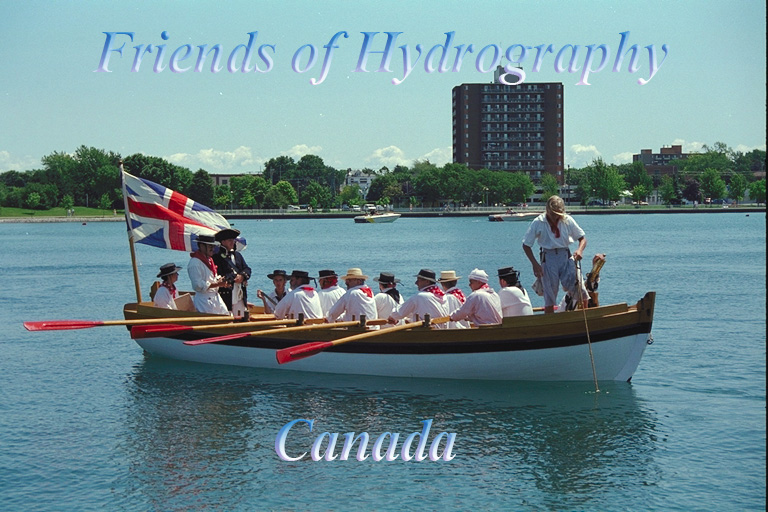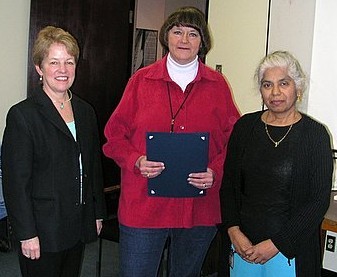V
1965 Hydographic Assistant (from 12 July) - CSS Acadia - Nfld
•1965/66-Training-Hydro I (CHS Class Photo)
1966 (Field assignment) - CSS Acadia - Magdalen Islands, Que. - Newfoundland
Capt. Alexander Vance
born 20 October 1868 in Ontario (1901 census)
• 1903 - Sailing Master FRANK BURTON, Lake Winnipeg Survey
Capt. George Vancouver, R.N.
Born at King’s Lynn, Norfolk, England, 22nd June 1757, died Richmond Hill, Surrey, 10th May 1798. Vancouver entered the Navy in 1771 with the rating of A.B. [Able Bodied seaman] but was placed on the quarterdeck as a junior officer and under this rating sailed with Cook in the RESOLUTION on that explorer’s second voyage 1772-75. He again sailed with Cook, as a Midshipman, on Cook’s last voyage, 1776-80. On Vancouver’s return to England in 1780 he passed for Lieutenant with seniority of 19th October 1780.
In 1789, he was appointed second-in-command to Captain Roberts on an expedition to the Pacific on board a new vessel named the DISCOVERY. Owing to the Nootka difficulty in 1790, this voyage of discovery was postponed and Vancouver was re-appointed to the COURAGEUX for a short period. Towards the end of 1790, he was appointed Commander and given charge of the expedition. Whilst absent from England, he was promoted to post rank with seniority of 28th August 1794.
After his return to England, he devoted himself entirely to the preparation of his journals and charts for publication and had corrected all but the last few pages when he died at the Star and Garter Inn at Richmond Hill. He was buried in the churchyard of St. Peters at Petersham on 18th May 1798. His brother John, assisted by Captain Peter Puget, completed the work for the press. It was dedicated to King George III and published in two editions, 3 volumes 4° with folio atlas of charts in 1798 and 6 volumes 8° with one general chart in 1801. The copper plates were stolen between the first and second publications and were never recovered, the general chart only being re-engraved.
See R.W. (Sandy) Sandilands, Captain George Vancouver, - A Historical Sketch, 1989 Canadian Hydrographic Conference Proceedings, pp. 12-14.
• 1792 – In command of DISCOVERY, surveys Puget Sound, Strait of Georgia, Fitz Hugh Sound.
• 1793 – surveyed BC coast from Burke Channel, Observatory Inlet, Portland Canal & Pearse Canal
• 1794 – Surveys of Cook Inlet to Baranoff Island & Point Conclusion
Marilyn VanDusen
• 2007-Retired from Sailing Directions Office
Wendy Watson-Wright-Marilyn VanDusen - Savi
Sidney van Dyck
1927 – 20xx
•Jan 1953-Joined Canadian Hydrographic Service
•1953 – 1959-Hydrographer, Shoreparties - Lake Winnipegosis, Prince Edward Island, Parry Sound, Eastern Nova Scotia, St. Lawrence Seaway
Ships - Newfoundland, St. Pierre and Miquelon, Eastern Arctic.
•1958-Instructor, Computation course for new hydrographers.
•1960 - 1961-Hydrographer-in-Charge St. Lawrence Seaway Survey
•1962 - 1965-Training, Classroom - Ottawa.
Field - Lake Ontario, Lower St. Lawrence.
•April 1963 (CHS org chart) - Central Region, Field Officer (Technical Officer 5)
•1965-Appointed Training Officer
•1965 – 1976-Training Officer, Hydrography I Course
- Classroom - Ottawa
- Field - Lake Ontario, Antigua, Jamaica, Carriacou, Montserat, Vancouver Island, Grenadines, Dominica, St. Vincent, Guyana.
•1968 – 1976-Training Officer, Hydrography II Course
•1974 & 1976-Instructor, US Army Corps of Engineers – Vicksburg, Miss
•1977 - French language training.
•1978 - Transfer to Nautical Geodesy Section
•1986 - Transfer to Dept of National Defense.
Autobiography
I was born in Winnipeg, Manitoba in 1927 and lived in Steinbach, Man. until the age of eleven. In 1938, we moved to Hamburg, Germany, where I continued my schooling until 1943. That year we lost our home during an air raid and I moved to West Prussia. Immediately after the war I worked as interpreter for the Canadian Forestry Corps. Then I had an opportunity to go back to school and obtain my senior matriculation. Later I attended Goettingen university in Germany, majoring in mathematics and physics. In 1950 I returned to Canada and made Ottawa my home. For three years I worked in the oil heating business and then joined the Canadian Hydrographic Service.
Worked as assistant hydrographer, both on ships and shore-parties till 1959. Working areas were from Manitoba to Newfoundland and from the Great Lakes to the Eastern Arctic. Projects included were surveys required for the safe navigation of ships bringing supplies to build the DEW line in the arctic and for opening the St Lawrence Seaway. From 1958 onward I was involved with training on the basic hydrography course. In 1960 I was appointed hydrographer-in-charge (HIC) of the St. Lawrence Seaway Survey.
In 1962 training became a full-time occupation. The basic training course was now known as the Hydrography I Course. Classroom training was conducted in Ottawa. Field training, on Lake Ontario and the St Lawrence River, from 1962 to 1965 was carried out on board the CSS Cartier or the CSS Maxwell. In 1965 I was appointed Training Officer and HIC aboard the training vessels. From 1966 to 1970 and in 1973 field training on board the CSS Baffin was carried out in various locations in the Caribbean. Field training in 1971 and 1972 was on board the CSS W.J.Stewart on the West Coast. In 1974 training on the CSS Baffin was combined with a regular survey of the Guyana harbour entrance. From 1975 onwards training was carried out from shore parties.
The Training Committee decided to add a Hydrography II Course. This course was to provide working level hydrographers with the knowledge required to proceed beyond the working level. I was given the task of preparing this course. The first Hydrography II Course was given in 1968 and every year thereafter. The first course proved to be a bit of a problem for both the trainees and the training staff. These problems were resolved by the time the second course was presented.
In 1974 I was asked to design a course for the US Army Corps of Engineers. This course was for working level hydrographers of the Corps. The intent was to familiarize them with the new electronic surveying equipment introduced to the Corps. I was pleased to be asked to supervise and to instruct on this course both in the fall of 1974 and the spring of 1976 in Vicksburg, Miss.
After one year of French language training I was transferred to the Nautical Geodesy Section in 1978. In 1986, when staff in the Canadian Hydrographic Service was reduced by 25%, I transferred to the Department of National Defense. There I worked in the Air Force on matters related to Anti Submarine Warfare (ASW) until retiring from the Public Service in 1988.
1956 - Assistant Hydrographer - shore party Parry Sound, Georgean Bay, then HMCS Labrador, Eastern Arctic (Dew Line)
• 1960 - classification in 1960: Tech Off 4
1966 - (Field Program) - HIC, Baffin - Antigua, West Indies
Photos: Hydro I 1965/66, Hydro I 1966/67, Hydro I 1967/68
Miss Van Haaff
• 1947 - listed as Student Draftsman, Pacific Office.
D. Van Noort (or Van Nort?)
1966 -taken on strength - drafting section - Ottawa
1967/68 - working level draftsman - Ottawa
Herman Varma
Herman Varma graduated from Dalhousie University with a Bachelor of Science in Engineering Physics in 1971. He joined CHS in 1972 as a hydrographic surveyor. In 1988 he was tasked to solve the Dense Data problem relating to Rational Databases. This resulted in the HH Code Technology. He is currently working on the Source Database Design and implementation for CHS.
Source: 1998 Canadian Hydrographic Conference Proceedings, p. 12.
L.M. Vechter
• 1940-41 - in chart distribution
Norm S. Veitch
• 1946 - appointed as Student Draftsman, Headquarters
• 1947 - listed as Student Draftsman in chart drafting section
• 1960 - classification in 1960: Draftsman 3
April 1963 (CHS org chart) - Drafting and Reproduction, Unit 1, Group B (Draftsman Grade 3)
G.C. Venn
• former merchant marine officer
• 1906-11 - Lower St. Lawrence survey.
• 1911 - resigned at end of season and returned to England.
G. Vezina
• 1964 - Electronic Technician - CSS Baffin - 31 Aug - 5 Oct - Bay of Fundy survey
1966 - Electronic Technician - CSS Acadia - Magdalen Islands (Que) and Newfoundland (listed as J.V. Vezina)
Lieut. Alexander Thomas Emmeric Vidal, R.N.
• 1815 - with Capt W.F.W. Owen, south coast of Georgian Bay.
• 1816 - surveying Galops Rapids in St. Lawrence River.
HMS VIDAL named after him.
Ignace Vignault
• resident of Natashquan, P.Q., sailor on CARTIER
• 8 June 1931 - only one that survived drowning accident on Netagamu River, North Shore of Gulf during a survey.
L.R. Voligny
• 1904 - came from Public Works upon amalgamation.
Jim A. Vosburgh
Jim Vosburgh joined the Pacific Region of the Canadian Hydrographic Service in 1968, after graduating from British Columbia Institute of Technology (BCIT). He worked as a field hydrographer until 1974, then joined the training staff at CHS headquarters in Ottawa as an instructor in hydrographic surveying. In 1977, he returned to Pacific Region to resume field duties as a senior hydrographer. Most of his subsequent assignments have been in the Beaufort Sea area and also included work on development projects. He received his CLS in 1982. In 1984, he joined TERRA Surveys in Sidney, British Columbia. This [1986] is his second year that he has been the manager of a LARSEN Coastal Mapping System (lidar) survey in the southern Northwest Passage. Since then, he has been in charge of the remote sensing group at Terra Surveys.
Source: The Canadian Surveyor, Autumn 1986, p. 260.
1998 Canadian Hydrographic Conference Proceedings, p. 12.
1969 - Hydrographic Assistant - CSS Marabell - B.C. various locations (1 June to 10 Oct)
1970 - Hydrographic Assistant (TIRL) - Wm J Stewart - BC, various locations (15 April - 16 Oct)
A. Vrooman
• prior to 1903 on BAYFIELD
• 1903-04 - Chief Engineer FRANK BURTON, Lake Winnipeg survey


